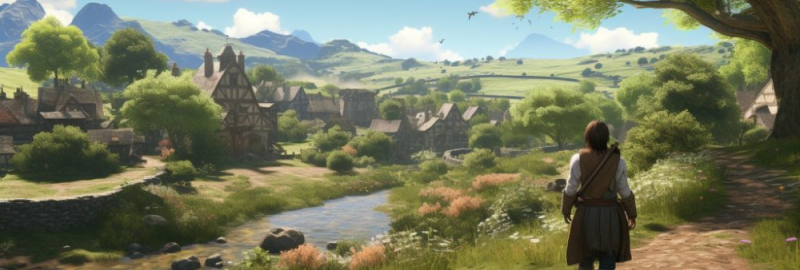
The most astonishing revelation about Tales of the Shire is its original emergence, given how it channels the tranquil life depicted in JRR Tolkien's Shire with an impeccable fit for the snug gaming scene. It remains quaint and calm even as it precedes the dramatic events of The Lord of the Rings. Following a brief trial of Tales of the Shire at Summer Game Fest, I was left with a very favorable impression. This title transcends being a mere Stardew Valley clone with a commercial twist; instead, it innovatively enhances the snug gaming category and the realm of Middle-earth, presenting an absorbing gaming experience.
It encompasses all the delightful elements expected from a snug game, from sowing seeds and nurturing a garden to forming bonds with the local inhabitants. Engage in a fishing mini-game, prepare meals, and personalize your living space. Wander through vivid expanses of countryside, gather wild plants, and mingle within a bustling village brimming with commerce and interesting characters. It confidently checks off all the expected features of the genre.
Nonetheless, Tales of the Shire distinguishes itself by integrating wisdom from its snug gaming predecessors. A navigational menu is at your disposal to pinpoint villagers' whereabouts, with a stream of azure birds guiding you to any individual you seek. For someone like me, who pursues Leah's affections in Stardew Valley but struggles to locate her for gift-giving, such a feature seems like a total lifesaver.
The game's pivotal element appears to be its culinary system. Each recipe mandates certain ingredients, with explicit essentials—for instance, a particular soup calling for a tomato base—while allowing for inventive choices within categories such as 'seafood' or 'fleshy vegetable.' Inserted components carry taste profiles like savory or sugary, altering the final preparation's palette.
Moreover, you'll gain access to various cooking stations, which influence your dish's texture. Timing your method at the cutting board, for example, will affect how finely or coarsely you chop, altering the meal's consistency. Such actions place your dish on a texture chart, and attaining a specific area will turn your creation into a standout dish with elevated star quality.
In typical Hobbit spirit, culinary gifts are a principal way to win over companions, so mastering the residents' taste preferences and preparing meals accordingly is a swift route to their goodwill. The developers have stated that intensive engagement with the culinary intricacies isn't mandatory for progressing in the game, but those features are present for those who relish them.
During the half-hour I spent immersed in Tales of the Shire, my focus was chiefly on cooking, and I could easily have dedicated more time to this feature alone. I scarcely delved into the fishing and trading, and I overlooked the hands-on decoration system, which appeared quite striking in the gameplay videos I've seen. Yet, this short stint was sufficient to convince me of the potential of Tales of the Shire – a game that artfully fuses well-loved snug gaming mechanisms, clever enhancements, and an enchanting dive into an esteemed narrative landscape.
